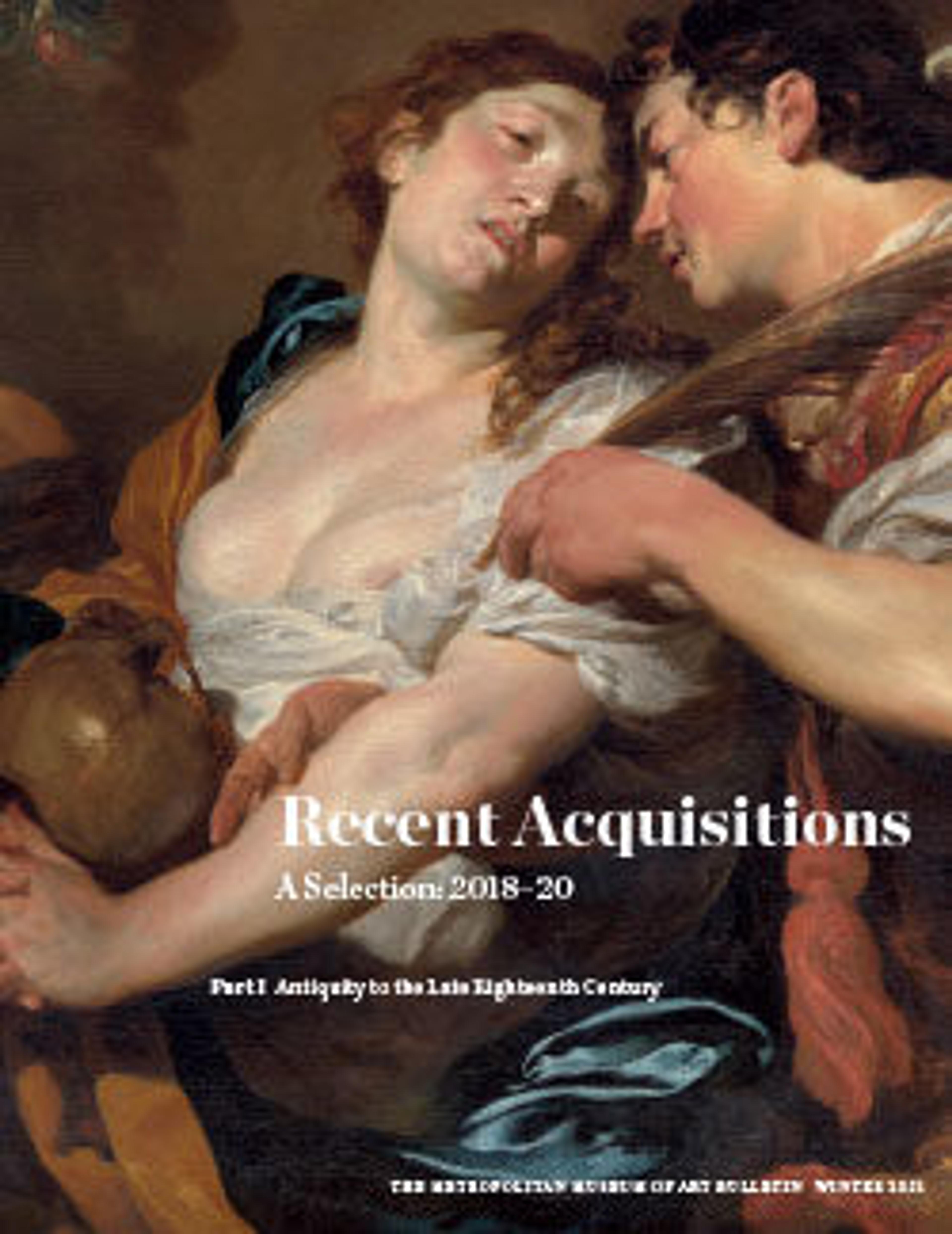Demilune horn "grand cor"
The poetic name "demilune" describes the profile of this instrument, which is one of the earliest forms of the hunting horn. Its crescent shape echoes instruments made of natural materials such as animal horn and elephant tusk. The brass body of this horn appears to have been formed from a single sheet that was shaped and joined with a longitudinal seam that is tabbed in the area of the bell before becoming a butt join along the remaining length of the instrument. The maker’s hand is visible in burnishing and hammer marks on the instrument’s surface. The bell interior bears traces of black pigment. The body of the instrument bears three brass rings, two mounted on ferrules encircling the body tubing and one mounted on the bell garland, for attachment to a baldric or carrying strap. An intricately crenelated garland adorns and strengthens the bell. It is stamped with a repeating pattern of flowers and embossed with the maker’s mark comprising a stag looking over its shoulder standing atop the initials RC. The whole is contained in a circle in the manner of a cartouche. Stamped on the bell body immediately above the maker’s mark is the text VERNON, possibly referring to place of manufacture.
Horns like this have been popular signalling instruments for centuries and their use is often depicted in tapestries and other contemporaneous art (see Met Museum tapestry 50.145.4). Like oliphants, these crescent-shaped horns were important badges of status and as such, often appear in heraldic devices and crests.
Horns like this have been popular signalling instruments for centuries and their use is often depicted in tapestries and other contemporaneous art (see Met Museum tapestry 50.145.4). Like oliphants, these crescent-shaped horns were important badges of status and as such, often appear in heraldic devices and crests.
Artwork Details
- Title: Demilune horn "grand cor"
- Maker: Cretien workshop, Vernon (c.1620 – ca. 1690)
- Date: early 17th century
- Culture: French
- Medium: Brass
- Dimensions: Length along outside curve 108.0cm.
- Classification: Aerophone
- Credit Line: Purchase, Elizabeth A.R. and Ralph S. Brown Jr. Gift, 2020
- Object Number: 2020.4
- Curatorial Department: Musical Instruments
More Artwork
Research Resources
The Met provides unparalleled resources for research and welcomes an international community of students and scholars. The Met's Open Access API is where creators and researchers can connect to the The Met collection. Open Access data and public domain images are available for unrestricted commercial and noncommercial use without permission or fee.
To request images under copyright and other restrictions, please use this Image Request form.
Feedback
We continue to research and examine historical and cultural context for objects in The Met collection. If you have comments or questions about this object record, please contact us using the form below. The Museum looks forward to receiving your comments.
